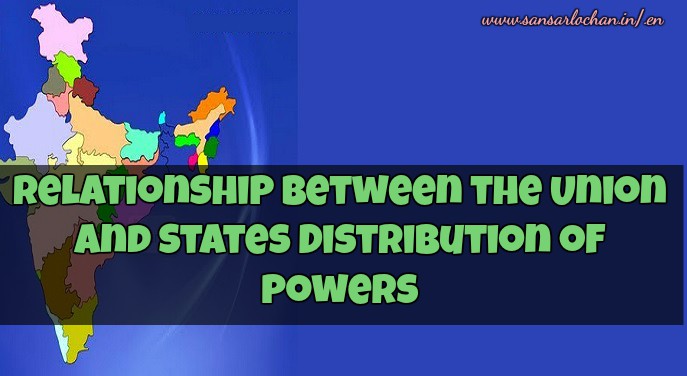The distribution of powers forms the core of the Indian Constitution. Executive authority in a federation is co-extensive with legislative competence. Provisions in the Constitution are there for spheres of activities of the Union and Constituent units. In India we had a federal constitution, wherein the residuary powers were mentioned in the 1935 Act. At the Round Table Conference they had proposed to have one list, but they ended with three lists on account of unbridgeable differences between Hindus and Muslims. This accounts for the distribution of legislative powers in the Federation of 1935, which was a result of political conditions. The Lists are enlarged so as to assimilate planning, social and economic factors. The State Legislatures have exhaustive powers and in fact it is the only Constitution in the world which has such three detailed Constitutional Lists. Chapter II, Part XI, of the Constitution relating to the “Union-State Administrative Relations” is essentially a chapter concerning Union-State administrative co-ordination.
Under our constitution there are 210 (now 205) items dealt with under the three Lists. The Union List has 97 matters, the State List has 61 matters (previously it was 66) and the Concurrent Lists has 47 matters.
Some Important Articles
i) Articles 73 and 162: – In considering the specific aspects of the over-all Union-State administrative relations, the principal point urging attention is that articles 73 and 162, relating respectively to the extent of the Union and State executive powers, assign the States a place of pride in the execution of laws.
ii) Article 339(2): – The Union has the power to give directions to a State for the preparation and execution of schemes essential for the welfare of Scheduled Tribe in the State.
iii) Article 350 A:- The President may issue directions to a State for providing adequate facilities for instruction in the mother-tongue at the primary stage of education to the children of the linguistic minority groups in that State.
Legislative
Three legislative lists have been drawn up for this purpose – Union List, Concurrent List and State List. Parliament alone can legislate on 97 items given in the Union List. The Union and the States both can legislate on 47 subjects given in the Concurrent List, but the former can over-rule the latter. The State Legislatures can legislate on 61 items given in the State List, though here also, the Union Parliament can legislate under certain conditions.
Residuary Subjects
Even after the classification of all subjects under the Union, Concurrent and State Lists, certain new subjects do crop up, which remained unallocated so far; such subjects are called Residuary subjects. The power to legislate on the residuary subjects has been vested in the Union Parliament.
Administrative
The executive powers of the Centre and the States extend to those matters which fall within the concurrent list. In certain matters, States have to carry out the wishes of the Centre.
Financial
Financially, the States are dependent on the Centre to a large extent. The States have to look to the Centre for grants-in-aid etc. They are given a share of the income-tax, excise duties etc. raised by the Central Government.
To this end, the Chapter II, on the one hand, arms the Union Government with powers to effectively control matters with regard to which Parliament has the power to make laws, and on the other, prescribes a scheme of Union-State cooperation in achieving all social-economic objectives. This Chapter also provides the necessary mechanism for Inter-State co-ordination and cooperation.
